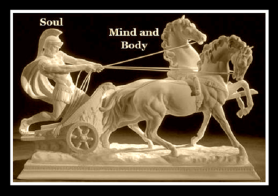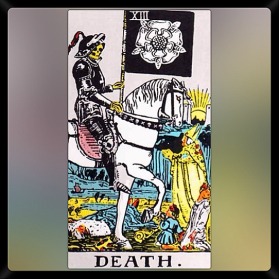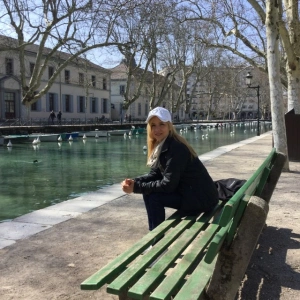►Tarot:
“Most Relevant Generalities / Major Arcana” 🗝:


The twenty-two cards of the Major Arcana. Tarot deck: Rider,Waite & Smith.

►Introduction and Sketch of this Post:
This is the first post of the series on “Tarot”.
Firstly, in section 1), I´ll present an overview of the story of Tarot, its use for divination purposes, tarot spreads, cards´positions (upright or reversed), total number of cards, division into two categories: Major and Minor Arcana.
In the second section (2) of this post, I´ll assess in-depth the Major Arcana.
For that purpose, I´ll use the classic Rider-Waite deck, illustrated by Pamela Colman-Smith, which has been continually printed since 1909. Hence, it is easy to find in Bookstores or online nowadays.
Let´s keep in mind that the Major Arcana cards are somehow related to Carl Jung’s archetypes. They are “patterns”, inherent part of the Collective Unconscious. These cards symbolise the process we go through in our lives, aiming to become a balanced and integrated person.
With that being said, I´ll offer the meanings of the respective 22 cards comprising this group.
In both, the upright and reversed position. Worth noting that, when you shuffle the tarot cards, they often end up facing in different directions. So basically, each card can show up in an “upright” or a reversed” position.
To end, in the third (3) section, I´ll dig into the so-called “Fool´s Journey”. The Fool card is numbered zero, and if you look closely at the cards, in sequential order, starting with the Fool, you´ll notice that them seem to tell us a story. The story of our own evolution as persons, going through different stages, with their respective struggles and victories. Along this journey, we encounter challenges, face adversity, perform labours, meet people, make hard decisions and fight opposing forces. Each step of the way brings us closer to embrace the Wholeness of Ourselves and of the World. This “journey” is, in fact a cycle. And one could go through the same cycle many times in a lifetime. Or one could just fail to reach the end of the cycle. There is of course, an implied recurring element associated with Karma here. Maybe the “Fool´s Journey” could reach its finish line in another, next life. Or did so in a past life and now he is facing a new, different challenge.
►1) Tarot. Generalities:
Story and Purpose. Rider-Waite Deck: Spreads. Positions. Major and Minor Arcana:


I own this deck!: Tarot Rider Waite boxed-deck.

1.1.⇒♦ What is Tarot and how does a Tarot Reading work?:
The Tarot is a pack of playing cards, used from the mid-15th century in various parts of Europe to play games such as Italian Tarocchini and French Tarot. In the late 18th century, it began to be used for divination.
In this last sense, Tarot cards are commonly used to measure potential outcomes and evaluate influences surrounding a person, an event, or both. The technical term for tarot reading is Taromancy (divination through the use of tarot cards), which is a subsection of Cartomancy (divination through cards in general).
Tarot reading is not about predictions, but more about possible outcomes as well as examining influences related to the issue at hand. These could be influences which the subject might not even be aware of before the reading.A spread is the arrangement of cards dealt in a reading.
1.2 ⇒♦Spreads:
There are many types of spreads. Usually, the querent (receiver of the reading) asks a general question, or could just picture a situation in his mind. He can keep them to himself. You (person doing the reading) can then pull six cards, representing different aspects of your past, present and future situation. You can pull three cards, instead, where the first represents the past, the second represents the present, and the third represents the future. The three card spread is called The Three Fates. Also, we have the so-called Celtic- Spread Reading, which consists of ten cards representing a variety of things including any past and future influences, personal hopes, and conflicting influences. You can check out other spreads here.
1.3 ⇒♦ Positions of the Cards: Upright or Reversed:
Cards can show up in two positions: Upright or Reversed.
The Upright position represents certain Idea or Situation.
But, what happens when the card shows up in a reversed or inverted position?.
a) If the card is reversed, the meaning is almost always considered to be the opposite of the one the card might reveal when it is upright.
Although this is the predominant criteria (and, hence, the one, I´ll stick to), there are still other ways of interpreting reversals.
b) One of them could be to say that they refer to the previous card (For example: If we have an inverted Strength card (8), it might actually be referring to The Chariot (7)).
c) Other way of interpreting reversals is to say that they represent blocked energies or resistance towards what the card represents.
d) Finally, another way of doing reversals would be to say that it indicates an unconscious influence and, hence, that the querent is not aware of it. For example: If we pulled an inverted Sun, we might say that the querent lacks awareness towards this bright, joyful influence. Maybe because it is hidden, or perhaps because it has not fully developed yet.
e) Another point to keep in mind: some people like to switch “gender” in those cards in which a female or male figure shows up. So, If we pulled Justice (with a Female figure) in an inverted position, we could assume that the characteristics of that card might be related to a Man in the querent´s life.
As I said above, I will provide the meaning of reversed cards as the opposite to which the card reveals in its upright position. But, when doing a reading you can include other interpretation criteria, too.

Justice Card: Upright and Reversed.

The Hermit Card. Upright and Reversed.

Hanged Man Card: Upright and Reversed.
1.4 ⇒♦ The Tarot Deck. Major and Minor Arcana:
A Tarot deck has 78 cards, consisting of two types of cards: Major and Minor Arcana.
The “Trump cards” (numbered 1 to 21) and the Fool (numbered 0) are called the Major Arcana, while the ten pip and four court cards in each suit are known as Minor Arcana.
•The Minor Arcana (Lesser Secrets) Consists of 56 cards, divided into four suits (Swords, Cups, Wands and Pentacles). Each suit has 14 cards: ten numbered cards and four court cards. The court cards are the King, Queen, Knight and Page/Jack, in each of the four tarot suits.
•The Major Arcana (Greater Secrets), consists of 22 cards, without suits: The Magician, The High Priestess, The Empress, The Emperor, The Hierophant, The Lovers, The Chariot, Strength, The Hermit, Wheel of Fortune, Justice, The Hanged Man, Death, Temperance, The Devil, The Tower, The Star, The Moon, The Sun, Judgement, The World, and The Fool. Cards from The Magician to The World are numbered in Roman numerals from I to XXI, while The Fool is the only unnumbered card, often placed at the beginning of the deck as 0.
I finally wanted to stress that when one lays out a spread or performs a reading and sees mostly Major Arcana cards,one can assume that the matter in question, and/or the querent’s life, is more profound in comparison to Minor Arcana cards. The Major Arcana are signposts to things, events, and people, that are meant to be taken more seriously and looked at more closely, in general, than the Minor Arcana cards will generally represent.
►2) Major Arcana Cards (Rider-Waite Deck):
These are 22 cards of the Major Arcana and their respective meanings, in both the upright and reversed position.
⇒♦ 0. The Fool:
The Fool is shown at the beginning of his journey with unlimited potential. He has a bag holding off his staff and a bright sun rising up behind him.
The white rose in his left hand represents purity and innocence. He has a guardian in the little white dog warning him of danger as he approaches the edge of the cliff. The fool is unaware, as he is looking up.
The card represents beginnings, overly optimistic approaches and spontaneity. It also reminds us that, even if we are enjoying ourselves, there are always consequences facing our actions.
►Meanings:
•Upright: Living in the moment, feeling carefree or spontaneous, entering a new phase.
•Reversed: Being blocked, restricted.



⇒♦ I. The Magician:
When the Magician appears in a spread, it points to the talents, capabilities and resources at the querent’s disposal. It represents possibilities and the card shows that the querent has all the elements, as the four suits of the Minor Arcana (Swords, Wands, Pentacles and Cups) show up in the card. The magician is the creator of ideas and thoughts.
►Meanings:
•Upright: Acting consciously, acknowledging your motivations. Feeling centered and committed. Being creative and energized.
•Reversed: Inability to act or react. Feeling drained. Losing focus or commitment.



⇒♦ II. The High Priestess:
The High Priestess card shows her seated between two pillars marked B and J, which stand for Boaz and Jachin respectively (You can find these names in the First Books of Kings). Furthermore, these letters are inscribed upon the pillars of the Salomon Temple, associated with Wisdom. There is a cloth behind her depicting pomegranates, a symbol of death and the afterlife in Greek Mythology. The High Priestess is the keeper of secret knowledge, as the crystal ball on her head shows. There is a crescent moon beneath her feet, which might represent that the opportunities could increase. She is holding a book, the Tora, the Jewish sacred book.
►Meanings:
•Upright: Withdrawing. Being passive or calm. Seeking guidance from within. Understanding the potential and possibilities. Looking beyond the obvious.
•Reversed: Inability to find your inner voice or to look beyond.



⇒♦ III. The Empress:
The Empress depicts a woman seating in a field. She represents fertility, being a sort of Mother figure. She is surrounded by flowers and plants. There is also a heart-shaped rock with a Venus symbol on it. As we know, this symbol stands for Women.
►Meanings:
•Upright: Nourishing life. Nurturing and caring for others. Abundance. Experiencing the senses (pleasure, beauty, etc). Feeling connected to Nature.
•Reversed: Focusing on oneself without caring for other people. Scarcity. Inhibition. Closure.



⇒♦ IV. The Emperor:
The figure in this card depicts stability, structure, power and protection. He is related to Aries, in the Horoscope.
►Meanings:
•Upright: Father figure. Setting directions, laws rules or boundaries. Applying reason. Creating order. Exerting control.
•Reversed: Chaos. Lack of control and order.



⇒♦ V. The Hierophant:
He is a High Priest. He sits upon his throne as to other men kneel before him. He is a man who shares rituals, he is a leader of a flock/group, not of individuals. He represents alliances, goodness, comfort and traditional values. The Hierophant is associated with Taurus, in the Zodiac.
►Meanings:
•Upright: Education, becoming informed. Having a belief system. Following the rules, staying within conventional bounds.
•Reversed: Being heterodox, rebel. Not sticking to traditional values. Acting crazily.



⇒♦ VI. The Lovers:
This card shows temptation, represented by the snake on the tree. We can also see two human beings, male and female, and a spirit with open hands above them, a brilliant sun. The card is not about two people however as it is about one: the person who experiences love. It refers to falling in love with someone or … Something. This card is associated with Gemini, in the Zodiac.
►Meanings:
•Upright: Love. Marriage or partnership. Establishing bonds. Staying true to yourself. Determining values. Facing a moral choice.
•Reversed: Loneliness. Loss in relationships. Rejection. Sticking to others´opinions or values.



⇒♦ VII. The Chariot:
It represents labour and power. There are two sphinxes. Their colors are reversed, pretty much like a Yin-Yang symbol. The driver has a Sun on his head. We can see rising and falling moons close to his neck. The complementary nature of these two opposite natures tend to echo the sphinxes pointing out to Balance. The Chariot is related to Cancer, in the Horoscope.
►Meanings:
•Upright: Victory, reaching goals. Being determined and focussed. Feeling self-confident. Mastering emotions. Self control, discipline.
•Reversed: Putting other´s first. Resignation. Lack of determination or focus. Low self-esteem. Defeat. Confusion.



⇒♦ VIII. Strength:
The card shows a maiden taming a lion, not with physical strength, but with strenght of character: understanding, compassion. This is symbolic of resourcefulness, of softening the power we have to control others. The card shows that harmony has been achieved as the lion seems to be happy as the woman caresses him and his tail is tucked between his legs, in a submissive attitude. The woman has a symbol of infinite, as it appears in the card of the Magician. This represents endless possibilities. The card stresses that our strengths are much more than our physical abilities. This card is related to Leo, in the Horoscope.
►Meanings:
•Upright: Strenght and power. Refusing to get angry, maintaining composure. Caring about others, compassion. Forgiveness. Persuasion, being able to influence.
•Reversed: Hard Control. Weariness.



⇒♦ IX. The Hermit:
The card depicts an old man, alone, leading his way through the darkness by a light, which, is actually a little shining star. The Hermit represents knowledge, inner peace and understanding of his life. The card represents solitude, withdrawal, careful thought, ruminations.
The Hermit could represent a need to be alone in order to sort out things… Or a person in the querent´s life. The Hermit is associated to Virgo, in the Horoscope.
►Meanings:
•Upright: Being introspective, looking for answers within. Withdrawing from the world. Loneliness.
•Reversed: Involvement with the world. Being with others.



⇒♦ X. Wheel of Fortune:
We can see the letters T, A , R and O which stand for Tarot, as it its spelt. This represents endless circles. In the inner, little circle, we can see the signs for the four key elements in Alchemy: Mercury, Salt, Sulfur and Water. The Egyptian God Anubis, (painted in red) is holding the Wheel on his back. Anubis looked like a dog and was a Psychopomp and Ruler of the Underworld. Upon the wheel we can see a Sphinx, keeping the balance of the wheel itself. There is a snake on the left of the card. Some say this snake is Typhon, a monster from Greek Mythology, representing Earth. On the four corners of the card yellow, winged creatures are reading books. This could reference the Book of Revelations. The creatures resemble a lion, a calf, a human being and an eagle. The wheel is a circle, but carrying with it the past experiences. It represents completion, also Fate, sudden good luck, transitions and changes.
►Meanings:
•Upright: Feeling a sense of destiny. Uncovering patterns and cycles. Turning point: altering the present course. Speed. Change.
•Reversed: Slow pace. Blocked change, no movement.



⇒♦ XI. Justice:
The card depicts a King seated between two pillars. He has a sword in one hand and a scales of Justice in the other. It represents balance, a middle ground. This card could also be literal suggesting a Court proceeding, a conflict or the involvement of Authority to resolve a dispute. Justice is associated with Libra in the Horoscope.
►Meanings:
•Upright: Fairness, justice. Honesty. Responsibility. Acknowledging the truth. Accepting the consequences of your actions.
•Reversed: Avoiding the truth, disavowing your role. Shirking responsibility.



⇒♦ XII. The Hanged Man:
The card depicts a man suspended by his legs upside down from a tree. His leg is bent and his face is peaceful. There is no indication of suffering. A corona is around his head indicating wisdom. The hanged man indicates a change of perspective, swaying between different possibilities, an inability to make a decision. It is a time of internal focus , introspection and self-discovery.
Being hung by one leg was traditionally a punishment for traitors. In that sense, what the hanged man sees as right is upside down to those who have passed judgement upon him.
►Meanings:
•Upright: Waiting. Letting go. Accepting what is. Overturning priorities.
•Reversed: Inability to let go. Control. Self-assertion. Struggle.



⇒♦ XIII. Death:
The Death card depicts a skeleton in dark armor, a grim reaper upon horseback. Before him, a Priest offers prayers, a man lays dead, a young looks on with curiosity as an older child turns away in fear. Overall, we can see the range of emotions that people experience. In the Reaper´s hand there is a black flag. This card is a symbol of change, part of the cycle of death and rebirth. This card is associated with Scorpio, in the Zodiac.
►Meanings:
•Upright: Endings. Putting the past behind you. Change or transition. Accepting the inevitable. Cutting out what isn’t necessary.
•Reversed: Beginnings. Fresh start.



⇒♦ XIV. Temperance:
The card depicts an archangel at the edge of a riverbank. One foot on land, the other in water. He pours water from one cup into another. The card is about balance. It suggest finding compromise or agreement as well as reminder to maintain moderation. This card is associated with Sagittarius, in the Horoscope.
►Meanings:
•Upright: Showing moderation. Mitigating a harsh position. Harmony. Fostering cooperation and synthesis. Healing and flourishing.
•Reversed: Excesses. Disagreement, competition. Discord, lack of harmony.



⇒♦ XV. The Devil:
The Devil in this card has horns, goat legs and wings of a bat. He holds a torch in his left hand. Chained to his pedestal are a man and a woman, also with characteristics of the devil: horns and a tail, but interestingly, their chains are loose around their neck. They are capable of slipping them off. However, they choose to remain chained. The card represents addiction, vice or obsession, things to which we might choose to remain beholden. In relationships, this card could represent a control and temptation. This card is related to Capricorn in the Zodiac.
►Meanings:
•Upright: Being obsessed and unaware. Allowing yourself to be controlled. Being addicted. Overindulgence. Feeling hopeless.
•Reversed: Independence. Clarity. Hope and optimism. Release, freedom.



⇒♦ XVI. The Tower:
The Tower shows a tall tower pitched atop a mountain. Lightning strikes and flames burst from the building’s windows. People are leaping from the tower in desperation, wanting to flee such destruction and turmoil.
The Tower signifies darkness and destruction on a physical scale. The Tower itself represents ambitions built on false premises. The card is associated with sudden, disruptive, rude awakening and destructive change.
►Meanings:
•Upright: Sudden change, defeat, destruction. Erupting in anger. Letting everything go. Exposing what was hidden. Toppling from the heights
•Reversed: Victory, control. Staying together. Serenity. Calm.



⇒♦ XVII. The Star:
The card depicts a maiden kneeling at the edge of a small pool. The woman holds two containers of water. She pours the water out to nourish the earth and to continue the cycle of fertility,
The other container pours the water onto dry land in five rivulets, representing the five senses. The woman has one foot on the ground, representing her common sense, and the other foot in the water, representing her intuition. Behind her, shines one large star and seven smaller stars. All the stars have eight points, and eight represents Strength.
The card entails illumination, guidance and renewal. It suggests nourishment and hope. The astrological sign of the Star is Aquarius.
►Meanings:
•Upright: Regaining hope. Realizing an inner strength or truth. Wisdom. Being generous. Free-flowing love. Peace of mind. Calm.
•Reversed: Hopelessness, lack of faith, pessimism. Upheaval, Chaos.
⇒♦ XVIII. The Moon:
This card depicts two wolves howling at a Full Moon with a Crescent Moon inside.
The pool at the base of the card represents the subconscious mind and the crayfish that crawls out of the pool symbolises the early stages of consciousness unfolding.
The card suggests illusion, fear, anxiety. This might be a time of an emotional or mental trial and that the querent might not think clearly or could make questionable decisions as those inspired by the Lunacy of the Full Moon. The astrological sign of the Moon is Pisces.
►Meanings:
•Upright: Feeling fear. Deceiving yourself. Losing direction and purpose.
•Reversed: Being serene, untroubled, at peace. Enlightenment.



⇒♦ XIX. The Sun:
This is a joyful card. The bright Sun is an image of optimism and fulfilment. The child in the card is happy. He is naked and this represents innocence and purity. The white horse upon which the child rides represents strength and purity of spirit. The horse is without a saddle and is controlled without the use of the hands. The sunflowers in the background represent the fruitfulness of the spirit under the nourishment of the Sun.
►Meanings:
•Upright: Understanding. Enlightenment. Believing in your worth. Greatness, shining brilliantly. Joy and enthusiasm.
•Reversed: Being tired or sad. Weariness, confusion.



⇒♦ XX. Judgement:
The Judgement card shows a number of naked men, women and children rising up from their graves, responding to the trumpet call of the Archangel Gabriel, a psychopomp, who hovers high above them.
The card represents absolution and rebirth. The card could suggest that this is a time of resurrection, of bringing back the Past, revisiting things and making peace with past situations that were long ago thought be to put to rest, in order to finally move forward.
►Meanings:
•Upright: Making a judgment. Making hard choices. Knowing what you must do. Making a fresh start. Releasing guilt. Forgiving yourself and others. Absolution.
•Reversed: Endings, feeling regretful and guilty.



⇒♦ XXI. The World:
The card depicts a woman surrounded by a wreath (symbol of Victory), holding two wands.
The figures in each of the four corners of the World card are the same figures that appear on the Wheel of Fortune. Interestingly, the World card is very much associated with the Wheel of Fortune, reflecting the cyclical progression of time and the human experience.
The woman has one leg crossed over the other, just like the Hanged man. She is, in a sense, his opposite (i.e. the Hanged Man upright). As the Hanged Man looks inward, the woman in the World card looks outward. This card is a symbol of a completion and accomplishment.
►Meanings:
•Upright: experiencing wholeness and balance. Synthesis. Accomplishing your goals. Becoming involved. Feeling fulfilled.
•Reversed: Isolation, apathy, withdrawal. Lack of integration.



⇒♦Astrological Signs & Planets:
Which are their Equivalents in the Arcana Major?:
Here we have the Zodiac Signs and their respective cards in the Major Arcana:
💦Water Signs: Cancer: The Chariot . Scorpio: Death. Piscis: The Moon.
🔥Fire Signs: Aries: The Emperor. Leo: Strength. Sagittarius: Temperance.
💨Air Signs: Gemini: The Lovers. Libra: Justice. Aquarius: The Star.
🌎Earth Signs: Taurus: The Hierophant. Virgo: The Hermit. Capricorn: The Devil.
This slideshow requires JavaScript.
►3) The Fool´s Journey… Or the Fool´s Lifecycle:
The Fool (0) has no idea what will happen to him and sets out on his journey with only his hopes. At the start of his trip, the Fool is fresh, open and spontaneous. But he is also unaware of the hardships he will face as he travels this world.
On setting out, the Fool immediately encounters the Magician (I) and the High Priestess (II).
The Magician takes advantage of the opportunities the Fool has in himself and provides him with what he might find useful during his journey. The High Priestess provides the fertile ground in which creative events occur.

0. The Fool.

I. The Magician.
As he grows, he meets with the Empress (III). The Fool becomes more and more aware of his surroundings. Hence he comes to know Mother Earth, experiencing an awakening of his senses. The Emperor (IV) represents for the Fool a Father Figure and through him he learns about the importance of laws and rules.

III. The Empress. IV. The Emperor.
The Hierophant (V) teaches the Fool to acknowledge the value of the beliefs and traditions of his culture. The Fool learns to identify with a group and discovers a sense of belonging.
Eventually, the Fool experiences Love (VI). He wants to reach out and become half of a loving partnership. In the meantime, he also feels he need to decide upon his own beliefs.
The Fool becomes an adult, he has a strong identity and a certain mastery over himself. Through discipline and will-power, he has developed an inner control, which are characteristics of the Chariot (VII).

V. The Hierophant.

VI. The Lovers.

VII. The Chariot (Major).
Over time, life presents the Fool with many challenges, some that cause them sorrow and disappointment. But he is resilient and strong. He develops Patience, Compassion and Tolerance, which are all attributes of Strength (VIII).
Sometime during his journey, the Fool begins to look inward, trying to understand his feelings and motivations. He seeks moments of solitude to find his own direction, in accordance with the Hermit card (IX).
After much soul-searching, the Fool begins to see how everything connects. The Cycles he and Nature go through remind him of a Wheel of Fortune (X). He believes in both the power of his freedom to choose and Fate. He faces changes, recognizing his destiny in the sequence of events that led him to certain turning points.

VIII. Strenght.

IX. The Hermit.

X. Wheel of Fortune.
The Fool wonders about Justice (XI). He starts with himself and looks back over his life to trace his actions. He takes responsibility for his past actions so he can make amends and ensure a more honest course for the future.
Sooner or later, he faces an experience that seems too difficult to endure. This overwhelming challenge humbles him until he has no choice but to give up and let go. He feels his world has been turned upside-down. So he pauses free of pressures, like the Hanged Man (XII).
The Fool cuts out what no longer serves him, or what makes him feel bad about himself. Death (XIII) .. . and Rebirth. After al the changes, he is ready to start over.

XI. Justice.

XII. The Hanged Man.

XIII. Death.
The Fool realizes the balancing stability of Temperance (XIV) and its powerful effects. By experiencing the extremes, he has come to appreciate moderation.
But moderation doesn´t last forever and vices and excesses could prevail. The Fool confronts the Devil (XV) within himself, in the form of obsessions and addictions.
The Fool may only find release through the sudden change represented by the Tower (XVI). Sometimes only a monumental crisis can generate enough power to smash the walls of the Tower. Only the destruction of the tower will set him free.

XIV. Temperance.

XV. The Devil (Major).

XVI. The Tower.
After going through a harsh time, the Fool find serenity and calm. He looks up and sees his own Star (XVII), a reflection of his own inner Self, which replaces the negative energies of the Devil.
Woefully, he is still vulnerable to the illusions of the Moon (XVIII). The Fool’s joy is a feeling state. His positive emotions are not yet subject to mental clarity. In his dreamy condition, the Fool is susceptible to fantasy, distortion and a false picture of the truth.
However, the Sun (XIX) shines. It dispels the clouds of confusion and fear. It enlightens, so the Fool both feels and understands the goodness of the world.

XVII. The Star.

XVIII. The Moon.

XIX. The Sun.
The Fool´s false, ego-self has been shed and his true Self manifests. The Fool makes a deeper Judgement (XX) about his life. He forgives himself and others. He feels cleansed and absolved.
The Fool reenters the World (XXI), but this time with a more complete understanding. He has integrated all the disparate parts of himself and achieved wholeness and fulfillment.

XX. Judgement. XXI. The World.
►Last, but not Least: Tarot, “Deepening Knowledge”:
🗣Before waving Goodbye, I wanted to leave you a few recommendations, as to this topic. Check them out:
•Learn the meanings of all cards and other issues. (Playlist): Reading Tarot Cards by Goodie.
•Free Tarot Readings on YouTube, according to your astrological sign. I´ll recommend you my favorite Tarotist over there, who (as such!) often uses the classic Rider Waite Tarot (Or variations of it). Keep in mind that we haven´t still gotten into the Minor Arcana. But, we have already studied the Major Arcana. Look for your Zodiac sign, over here: Carol´s Universe. (Long, in-depth monthly reading & great knowledge of the cards).
•Poetry of the Tarot: Deborah Gregory´s poems based on Tarot Cards are excellent!.
Thanks for reading!. My next post will focus on Minor Arcana. Stay Tuned if you want to learn more about Tarot. See you!. Aquileana💕.
►Links Post:
![]()
![]()
 Resa is a Canadian artist, costume designer and author.
Resa is a Canadian artist, costume designer and author. 
![]()
![]()
![]()
![]()
![]()
![]()





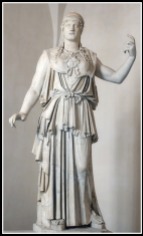










































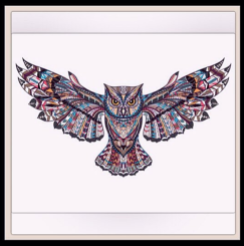




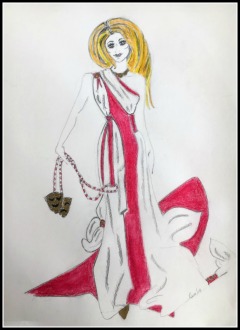





 Resa is a canadian artist, costume designer and author.
Resa is a canadian artist, costume designer and author. 
 In the Marseille French deck this character is called Le Bateleur, “the mountebank” and he is a practitioner of stage magic.
In the Marseille French deck this character is called Le Bateleur, “the mountebank” and he is a practitioner of stage magic. 




 In the 18th century Marseilles Tarot, this figure is crowned with the Papal tiara and labelled La Papesse, the Popess, a possible reference to the legend of Pope Joan.
In the 18th century Marseilles Tarot, this figure is crowned with the Papal tiara and labelled La Papesse, the Popess, a possible reference to the legend of Pope Joan. 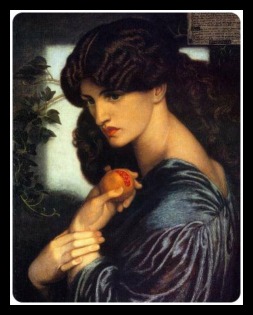


 The
The 





